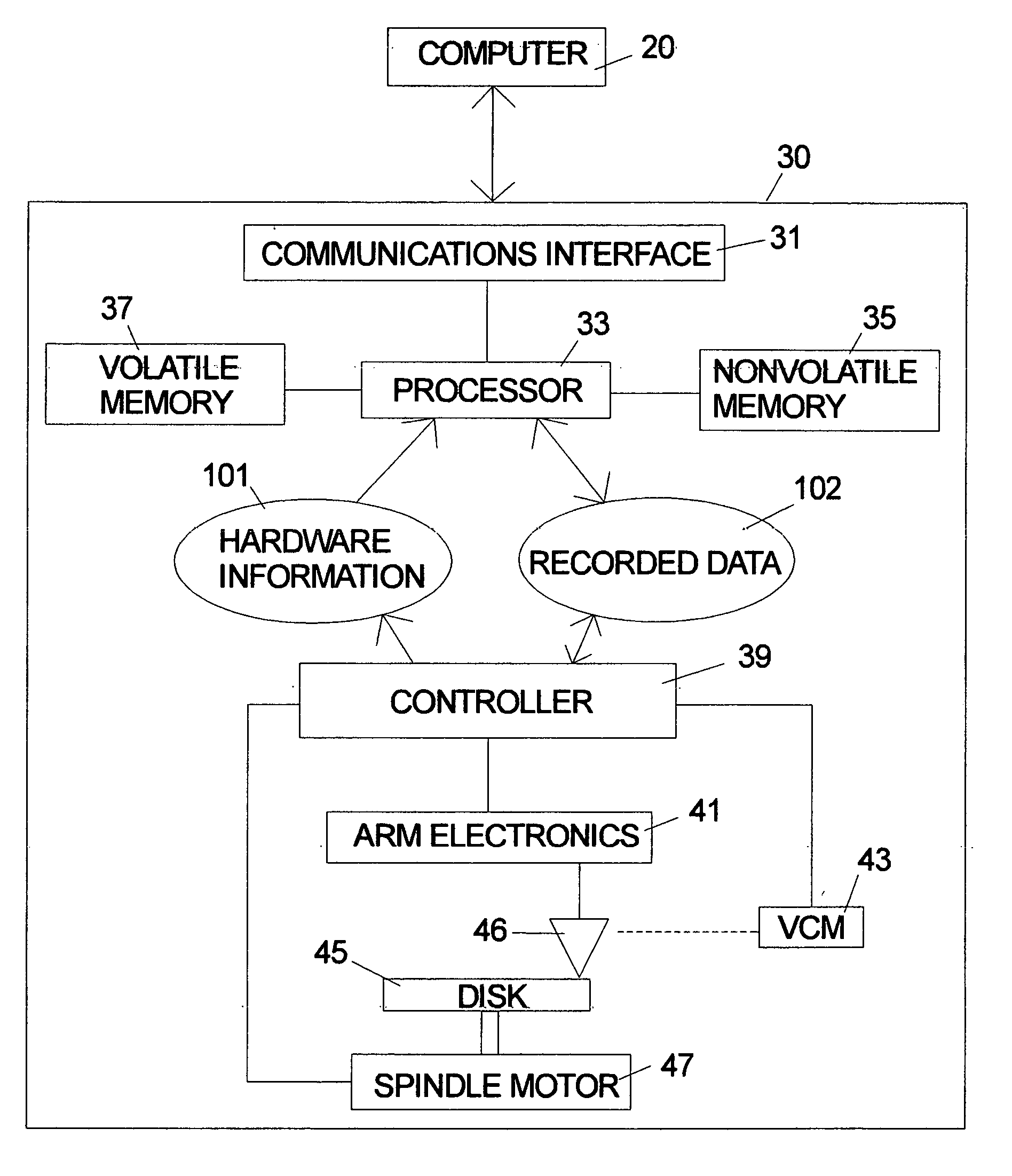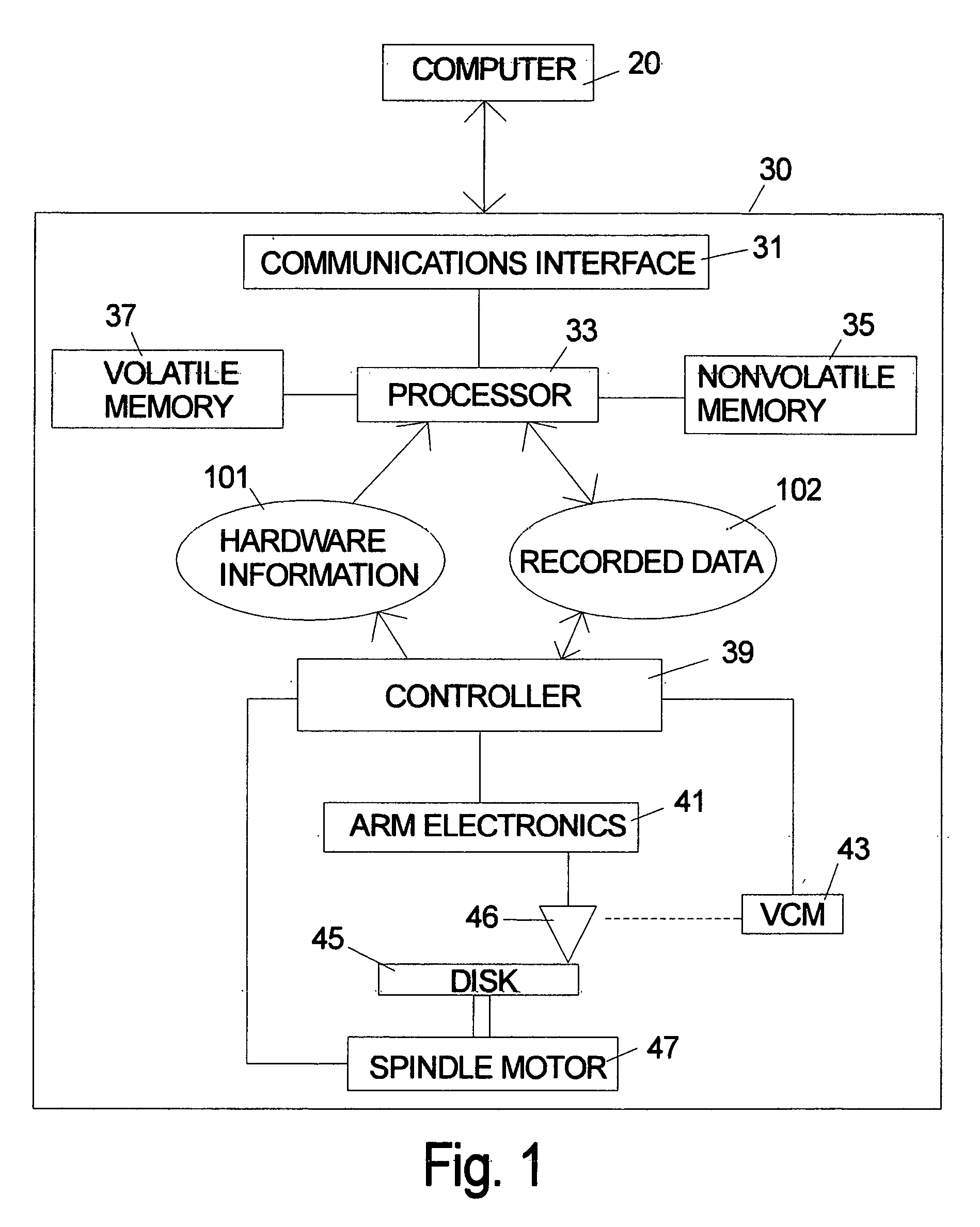Data storage organization for distributed computing in an intelligent disk drive
- Summary
- Abstract
- Description
- Claims
- Application Information
AI Technical Summary
Benefits of technology
Problems solved by technology
Method used
Image
Examples
Embodiment Construction
[0030]FIG. 1 is a symbolic illustration of a disk drive 30 according to the invention which will be called an “intelligent disk drive.” Information, commands, data, etc. flow back and forth between the host computer 20 and the disk drive 30 through communications interface 31 which can be any prior art hardware interface. The disk drive includes a general purpose microprocessor 33 which accesses both volatile memory 37 and nonvolatile memory 35. The program code for the microprocessor 33 can be stored in either the volatile memory 37 or nonvolatile memory 35. The program code can originate in the nonvolatile memory 35 in the form of a preprogrammed device such as an EEprom. The program code can also originate from the host computer 20. The disk drive 30 is shown as including a separate controller 39, but in an alternative embodiment the microprocessor can be designed to handle all of the tasks normally performed by a controller and the controller can be omitted. The arm electronics ...
PUM
 Login to View More
Login to View More Abstract
Description
Claims
Application Information
 Login to View More
Login to View More - R&D
- Intellectual Property
- Life Sciences
- Materials
- Tech Scout
- Unparalleled Data Quality
- Higher Quality Content
- 60% Fewer Hallucinations
Browse by: Latest US Patents, China's latest patents, Technical Efficacy Thesaurus, Application Domain, Technology Topic, Popular Technical Reports.
© 2025 PatSnap. All rights reserved.Legal|Privacy policy|Modern Slavery Act Transparency Statement|Sitemap|About US| Contact US: help@patsnap.com



